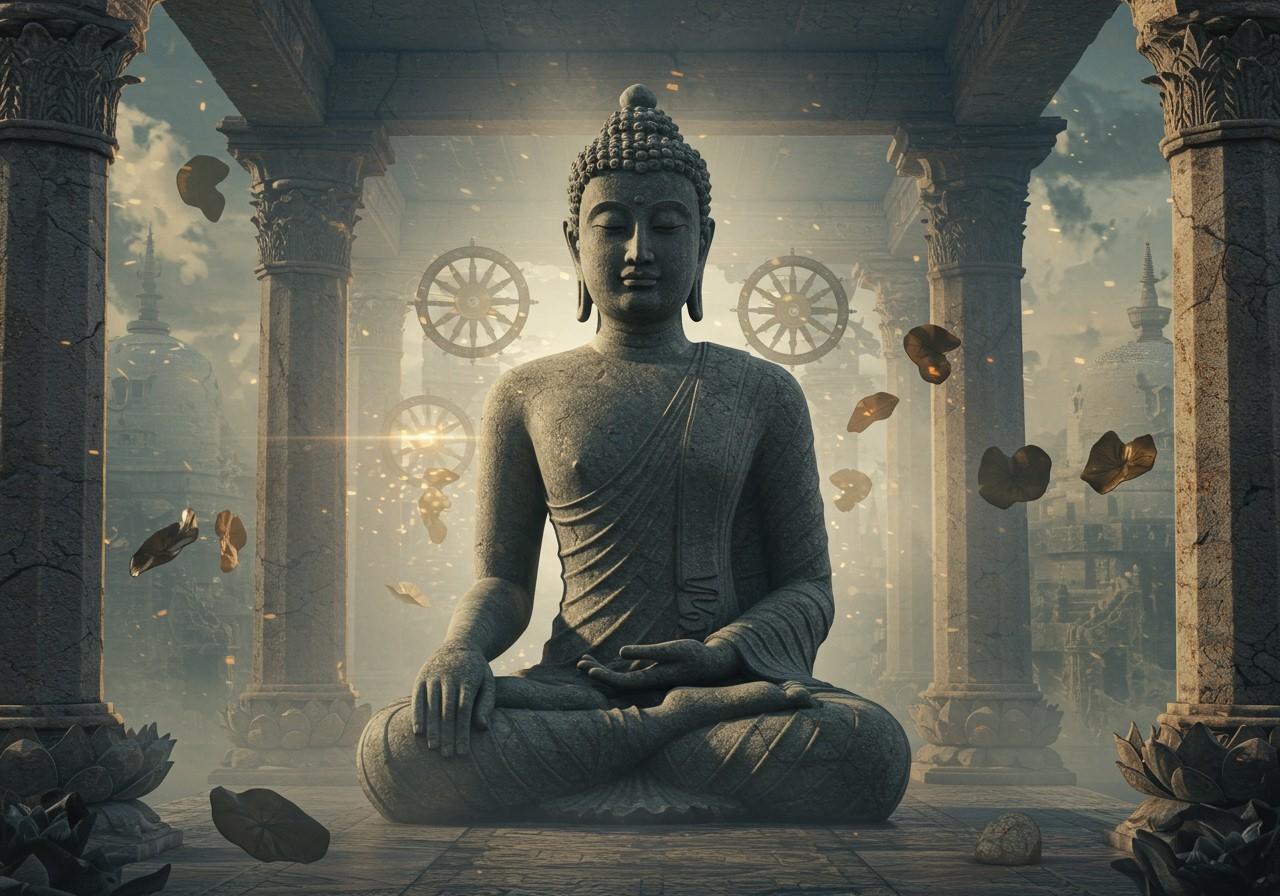
Explore the rich heritage of Gandhara art, a unique blend of Greco-Roman, Persian, and Indian influences. Gandhara, an ancient region in present-day Pakistan and Afghanistan, flourished from the 1st century BCE to the 5th century CE. Gandhara art played a significant role in spreading Buddhism and shaping Buddhist iconography. This article focuses on how Gandhara sculptures, particularly of the Buddha, depict the divine through detailed iconography and symbolism.
Historical Context of Gandhara Art
Gandhara art emerged from a blend of diverse cultures. This began with Alexander the Great’s conquests, bringing Greek culture into the region. The rise of the Greco-Bactrian and Indo-Greek kingdoms further promoted Hellenistic art. Later, the Kushan Empire, great patrons of Buddhist art and culture (1st-5th century CE), encouraged the fusion of styles from Rome, Persia, and India. This cultural exchange led to unique artistic traits.
Key features of Gandhara sculptures are:
- Realistic human forms: Departing from earlier symbolic representations, Gandhara artists sculpted figures with lifelike proportions and anatomical accuracy.
- Intricate drapery: The flowing robes and garments of the figures are depicted with meticulous detail, showcasing the skill of the artisans.
- Hellenistic artistic techniques: The influence of Greek art is evident in the naturalistic portrayal of the human form, the use of perspective, and the creation of three-dimensional depth.
Iconography of Gandhara Buddha Statues
Gandhara Buddha statues marked a significant shift in Buddhist art by depicting the Buddha in human form. This added a new dimension to Buddhist iconography, moving away from earlier aniconic representations.
Common attributes of Gandhara Buddha statues include:
- Ushnisha: A cranial bump symbolizing wisdom and enlightenment.
- Urna: A mark on the forehead representing spiritual insight and the third eye.
- Elongated earlobes: Signifying Buddha’s renunciation of earthly wealth and princely status.
- Serene facial expression: Reflecting inner peace, tranquility, and spiritual attainment.
Mudras, or hand gestures, hold deep symbolic meanings:
- Abhaya Mudra: A raised hand with an open palm, symbolizing fearlessness, protection, and reassurance.
- Dharmachakra Mudra: The gesture of turning the wheel of Dharma, signifying the Buddha’s teachings and the path to enlightenment.
The Buddha is often depicted in the lotus position (padmasana), symbolizing meditative absorption and spiritual purity. His robe (sanghati) is shown with detailed folds, conveying spiritual purity and renunciation.
Gandhara Style Buddha
The Gandhara style is distinct for its realistic portrayal of the human body, influenced by Greco-Roman artistic conventions. Gandhara Buddha sculptures display:
- Realistic musculature: The anatomical details of the body are rendered with accuracy, showcasing the influence of classical Greek sculpture.
- Detailed drapery: The folds and textures of the Buddha’s robes are depicted with meticulous care, adding to the realism of the sculptures.
Artists used materials like stucco and schist, allowing for fine detailing and durability. Techniques like shadows and highlights added depth and perspective.
Compared to other regional styles:
- Mathura: The Mathura school of art, also prominent during the Kushan period, favored a more symbolic and less naturalistic representation of the Buddha.
- Amaravati: The Amaravati style, prevalent in southern India, emphasized narrative scenes and dynamic compositions.
Symbolism in Gandhara Sculptures
Gandhara sculptures are rich in symbolism, portraying Buddha both as a historical figure and a divine being. Important symbols include:
- Halo (prabhamandala): A radiant circle surrounding the Buddha’s head, indicating spiritual radiance and enlightenment.
- Lotus flower: Symbolizing purity, spiritual awakening, and the Buddha’s birth from the mud of material existence.
Other figures like bodhisattvas and apsaras also feature prominently. Bodhisattvas symbolize compassion and the willingness to help others reach enlightenment. Apsaras, celestial maidens, represent beauty and grace.
Scenes from Jataka tales (stories of the Buddha’s past lives) and the life of Buddha are common in Gandhara reliefs. These narratives add depth to the spiritual messages conveyed through the art.
Poojn.in: Your Source for Sacred Art
Looking to bring the serenity and symbolism of Gandhara-inspired art into your home? Poojn.in offers a curated selection of Buddhist statues and spiritual items. Explore our collection of Lord Buddha hand-crafted marble dust idols. These beautiful pieces capture the essence of Gandhara art, offering a tangible connection to Buddhist tradition.
Conclusion: The Enduring Legacy
Gandhara sculptures offer a unique glimpse into the fusion of diverse artistic traditions. They stand as a testament to the region’s rich cultural heritage. From realistic human forms to intricate symbolism, Gandhara art has left a lasting impact on Buddhist iconography, spreading its influence across Asia through the Silk Road. The depiction of Buddha in human form, along with symbolic elements like the ushnisha and mudras, became a standard in Buddhist art thanks to the Gandhara tradition. Museums and scholars play a vital role in preserving these treasures, helping us appreciate their historical and artistic significance.
Gandhara sculptures remind us of the power of cultural exchange and how art can transcend boundaries. Embracing this heritage allows us to connect with traditions and wisdom embedded in these divine depictions.


